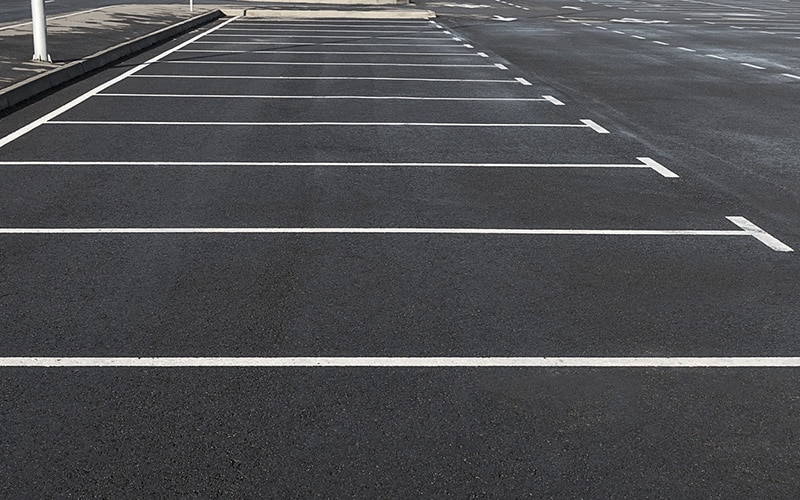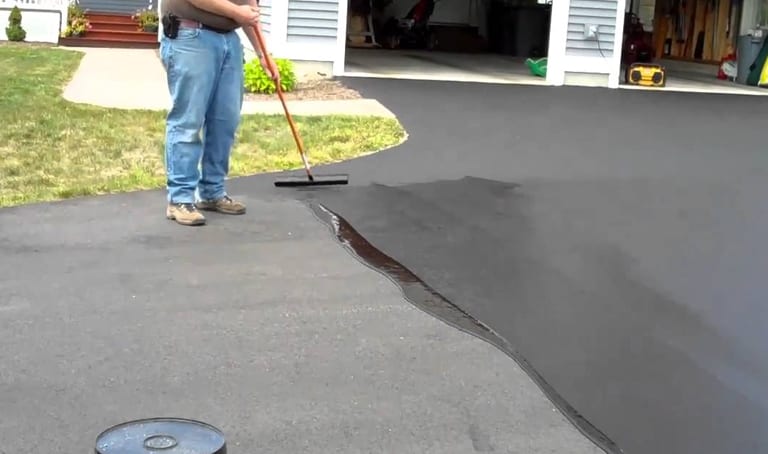Raise Security and Charm: Angled Parking Area Solutions with Asphalt Sealing
Hot Mix Asphalt: A Sustainable Option for Sidewalk
Warm Mix Asphalt (HMA) has become a leading sustainable option for sidewalk remedies, offering a myriad of environmental advantages and cutting-edge technologies. Its ability to minimize and reuse materials energy consumption offers an engaging situation for its adoption in road construction jobs. Additionally, the long-term performance and sturdiness of HMA make it a recommended choice for facilities advancement. As the need for green building practices grows, exploring the nuances of HMA's sustainability can provide beneficial understandings right into the future of sidewalk solutions.
Ecological Benefits of Hot Mix Asphalt

Moreover, Warm Mix Asphalt assists to mitigate metropolitan warmth island impacts. Its dark shade absorbs sunshine, reducing the amount of warm mirrored back into the ambience compared to lighter-colored pavements. This can decrease ambient temperatures in city areas, reducing the demand for a/c and inevitably decreasing power intake.
Additionally, Hot Mix Asphalt adds to boosted stormwater monitoring. Its permeable nature allows water to charge and infiltrate the sidewalk groundwater materials, reducing drainage and the danger of flooding. These environmental benefits make Hot Mix Asphalt a lasting selection for paving roadways and highways.
Energy Performance in HMA Manufacturing
Is power performance a critical variable in the production of Hot Mix Asphalt (HMA)? Power plays a substantial function in the production of HMA, influencing both expense and environmental sustainability. One vital aspect of power effectiveness in HMA production is the usage of warm mix asphalt (WMA) modern technologies.
In addition, advancements in plant innovations have actually led to even more energy-efficient HMA manufacturing processes. By enhancing power usage in HMA manufacturing, the market can reduce its carbon footprint while keeping high-quality sidewalk materials.
Recyclability of Warm Mix Asphalt
The recyclability of Warm Mix Asphalt (HMA) is a pivotal element of its sustainability and lasting environmental impact. HMA is just one of one of the most recycled materials in the United States, with over 100 million heaps of reclaimed asphalt pavement (RAP) being recycled each year in new pavement building. Reusing HMA offers a number of ecological advantages, such as decreasing the requirement for virgin products, lowering energy consumption during production, and reducing the quantity of waste sent to land fills.
The procedure of reusing HMA entails milling the existing pavement, crushing it right into smaller sized items, and blending it with brand-new accumulation and asphalt binder to develop a recycled mix. This recycled mix can typically do along with and even better than standard HMA, while calling for less basic materials and creating lower greenhouse gas discharges. By integrating RAP into brand-new pavement jobs, road companies can conserve natural sources, lower costs, and minimize the environmental impact of roadway construction and maintenance tasks. Generally, the recyclability of HMA plays a significant function in advertising lasting methods within the pavement industry.

Long-Term Performance of HMA
Asphalt sidewalks show resilience and durability over a prolonged period, showing the long-lasting performance of Hot Mix Asphalt (HMA) The durability of HMA can be connected to its capability to hold up against rush hour lots, harsh climate condition, and the results of aging. Researches have actually revealed that well-designed and correctly built HMA pavements can last for 20 years or even more with normal upkeep. The secret to maximizing the lasting efficiency of HMA hinges on her latest blog utilizing premium materials, following ideal techniques in building and construction, and carrying out efficient maintenance strategies. Correct water drainage, regular examinations, and prompt repair services are vital for preserving the architectural stability of HMA pavements over time. In addition, developments in HMA innovation, such as using polymer-modified binders and warm mix asphalt, have better boosted the longevity and longevity of HMA sidewalks. By focusing on top quality building and upkeep techniques, HMA continues to prove itself as a lasting and affordable solution for resilient pavement facilities.

HMA: Longevity and Sustainability
Demonstrating both toughness and sustainability, Hot Mix Asphalt (HMA) has actually ended up being a cornerstone in the building and construction of lasting sidewalk facilities - commercial parking lot paving. HMA's toughness stems from its capability to withstand hefty tons, rough climate condition, and high web traffic quantities, making it a trustworthy choice for roads, highways, and flight terminal runways. The structure of HMA, which generally consists of aggregates, binder, and filler, plays a vital role in improving its long life and resistance to tear and put on
Furthermore, HMA's sustainability depends on its recyclability and energy-efficient production process. The capacity to reuse recovered asphalt sidewalk (RAP) in new HMA blends reduces the demand for virgin products and decreases the environmental impact of pavement building and construction and maintenance. Additionally, the power performance of producing HMA depends on its lower mixing temperatures contrasted to various other pavement materials, causing minimized power intake and greenhouse gas exhausts.
Conclusion
In description verdict, warm mix asphalt (HMA) provides a sustainable remedy for sidewalk with its site environmentally pleasant attributes. HMA's recyclability, energy efficiency in manufacturing, and long-lasting longevity make it a green choice for roadway building and construction.
HMA is one of the most recycled products in the United States, with over 100 million lots of recovered asphalt pavement (RAP) being recycled each year in brand-new sidewalk building.The process of reusing HMA includes milling the existing sidewalk, squashing it into smaller sized items, and blending it with brand-new aggregate and asphalt binder to produce a recycled mix.Asphalt sidewalks demonstrate longevity and durability over an extended duration, reflecting the long-lasting performance of Hot Mix Asphalt (HMA) In addition, improvements in HMA technology, such as the use of polymer-modified binders and cozy mix asphalt, have additionally enhanced the toughness and longevity of HMA sidewalks. The capability to recycle reclaimed asphalt pavement (RAP) in brand-new HMA mixes reduces the demand for virgin materials and lessens the environmental effect of sidewalk construction and maintenance.